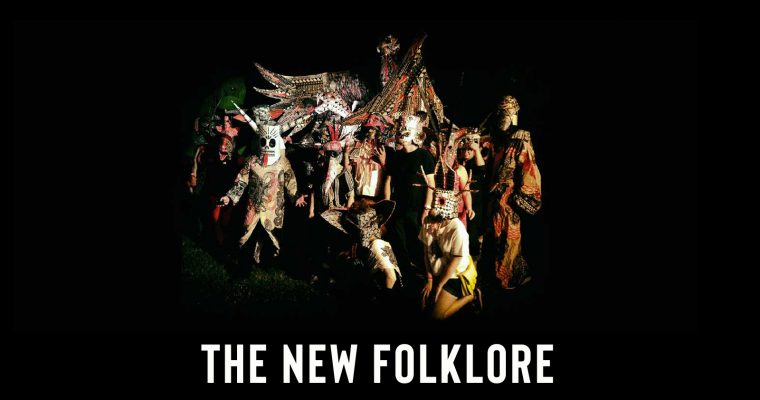
In his 2016 book written with UFO abductee Whitley Strieber, The Super Natural: A New Vision of the Unexplained, Jeffrey Kripal notes
Grays were, in appearance, strikingly similar to the fairy folk of Northern Europe. Also like them, they were frightening, came out of the night, and abducted people. I might note in passing that the majority of ur correspondents had last names suggesting Scotch or Irish descent. What this might mean I don’t know, but, as is true of most of this material, there must be an as yet unknown significance.
Kripal is not the only one to make this connection. There have been multiple authors who’ve note the similarities between alien abductions and stories of fairy folk from the British Isles, some very insistently. Beyond the physical appliance, there’s the distortions in time, the ethereal otherness that both sets of being seem to possess, and the fact that they do both come in the night and take people away. There does indeed seem to be some unknown significance here.
Fairies were a constant threat in the folklore of the British Isles. They lived in the hills and the woods, in the air and the water. They could sicken and kill livestock with their tiny arrows. They could could turn the milk bad with an angry glance. They could steal a healthy child and replace it with a shadow that would sicken and die. They were a real and constant threat to prosperity and to continued existence.
But against this threat, the people developed defenses. Carrying a little bit of iron with you. Saying the right prayer quickly at the right time. Leaving a little dish of milk out for the fairies at night. There were ways to keep the harm the fairies caused to a minimum.
Working in the 1970s and 80s, folklorist David Hufford noticed that there was a striking similarity to a number of cultural accounts of a specific form of supernatural encounter, a phenomenon he knew from his work in Newfoundland as “Hag Riding.” According to this tradition, a witch will visit someone in the night, sitting on their chest and keeping them from breathing. Someone being ridden by the hag would be unable to move to shake the witch off. Even if they can’t see her, they felt her presence.
Similar traditions existed in the Appalachian mountains, West Africa, Gullah/Geechee culture, Scotland, Ireland, and other cultures spanning the globe. Some cultures described these as encounters with witches. Others as meeting with devils, or demons. Hufford even encountered a detailed description from an atheist medical student who was absolutely skeptical of any supernatural explanation, and was interested in working with Hufford to find out what was going on..
What they pieced together from all of this was that there was a similar physical cause for all of this, eventually helping to describe a medical phenomenon known as sleep paralysis. Sleep paralysis is , i n very rough terms, what happens when while waking from sleep the body’s systems get rebooted in the wrong order, causing immobility and hallucinations. It’s a medical phenomenon that any human on the planet may experience at some time during their life. But the interpretation of that phenomenon was cultural. Whether it a witch or a devil sitting on your chest at night depended on what cultural ontology you approached the situation with.
Hufford described this a core experience. Sleep paralysis is a biological phenomenon, but that’s largely irrelevant for the person experiencing it. Because it is an entirely subjective experience, a misfire happening inside the brain, the only way it can be interpreted is within a cultural context. Something is happening to us we do not understand, and so we form a narrative around it based on the tools that are culturally available to us.
Now, I’m aware that sleep paralysis has also been suggested as an explanation for the alien abduction phenomenon, but that’s not what I want to focus on here. Instead, I want to look at the connection between alien abduction, fairies, and the idea of viewing these as the same core experience, expressed in different ways in a different cultural context. I’m also aware that there are some problems making that aliens equals fairies connection. Compilations of reports of meetings with fairies are generally put together by people looking for historical reports of meeting with fairies. There’s some problems with how representative that data set is. We have quite a few counterexamples in the form of historical reports of people not meeting with fairies. But take a leap of faith with me here and let’s assume that this is the same phenomenon, that there’s a core experience connecting these encounters with the Unknowable across cultures and across time.
Now, I am making no claims that I have any idea what the material cause of this core experience is. We only know that sometimes, occasionally, people tend to encounter beings from somewhere beyond. What these beings are, where they come from, and even whether they’re real or not I’m willing to leave, for now, as unknowable. Accept hat it’s just something that happens. And if we understand that it’s just part of the human condition that we live under constant threat from otherworldly beings, that’s where it begins to get genuinely disturbing. It seems like its definitely the sort of thing we should be worried about. Obsessed about, even. So what do you do about it? That’s where it becomes helpful to look at this core experience as a cultural experience. Because multiple cultures have come up with answers for what to do.
Cultures that lived with fairies had ways of defending yourself from, and ways of appeasing, those fairies. Cut a cross in your soda bread before baking it to let the fairies out. Turn your coat inside out if fairies were bothering you on the road. Always leave a little milk out at night for the fairies to drink. These were a set of understood cultural tools. Everyone in the community knew why there as a cross in the bread, why your coat was inside out, and what the milk was for. There was a cultural toolkit for dealing with the Unknowable on an everyday basis.
In mainstream American culture, this toolkit has been by and large banished. We don’t have a common understanding of what otherworldly beings are threatening us, we don’t have any socially acceptable way to deal with this threat. And I do think that threat is a core experience, though whether it is from actually otherworldly beings or not is beside the point. The core experience is the fear itself. Its that any of us can feel like we’re facing an otherworldly threat. And constantly facing a threat is not fun.
This os particularly true with a threat that only manifests itself rarely and unpredictably. When you never know exactly when something is going to pop out from behind a bush and whack you, it’s easy to become obsessed with looking behind every bush. And the longer that threat looms out there, the bigger it seems to become. Worry becomes obsession becomes paranoia.
That’s where I think that missing cultural toolkit comes into play. Because if this worry that can blossom into paranoia is part of the baseline human condition, when that paranoia gets out of control it can cause problems not just for the individual, but for all of society.
If you’re worried about the alien coming for you, you need ways to deal with that. Some people find that hanging tin foil in their rooms is enough to help them keep the aliens away. Some people build landing strips for the flying saucers. Some people form suicide cults. And without a recognized cultural context and socially acceptable ways to deal with these feelings, having them spiral out of control seems more likely.
I’m going to suggest here that actions like leaving milk out for the fairies can be something like a form of cognitive behavioral therapy. It’s a simple, concrete action that helps control the emotion, diffuse and deflect that paranoia before it gets too big. If leaving the milk out works 99% of the time to keep the fairies away, the 1% of the time they get though it’s not as big of a deal. And if you live in a culture that recognizes fairies, and recognizes as legitimate the methods of dealing with that threat, it helps keep the society as whole healthier. It gives the fear of the Unknowable room to breathe. Individual actions collectively become a form of cultural behavioral therapy that keeps society sane.
Here in America, there are minority cultures that have these methods for dealing with threats from the Unknowable. But in the majority culture, these methods don’t exist, and the expression of these fears is not socially acceptable. We don’t have little things we do that we all agree will keep the saucer people away. And without those individual actions to take away the pressure, the paranoia starts to snowball until it infects the culture on multiple levels. I think we need to find ways of reintroducing those small coping mechanisms, for the good of society as a whole.
What would it look like to deliberately construct cultural methods to deal with this core experience? Are there ways we can find cultural equivalents for leaving milk out for the fairies? What would happen if we all started leaving Twinkies on the roof as offerings for the saucer people?
This is not an unserious proposal. I suspect that a lack of culturally acceptable ways to deal with paranoia is why we’re seeing it spiral so rapidly out of control at the current moment. Finding constructive ways to diffuse this energy may very well help the next Comet Ping Pong shooting from happening. And keeping away the saucer people on a small scale may be enough of a totemic influence to keep the collective paranoia from building until it builds to point where the only thing that will keep the evil forces away is to build an absurdly massive totemic wall. Cultural behavioral therapy.
Twinkies for the saucer people might actually work. Folk concepts of outer space are deeply embedded in American popular culture at this point. So, for that matter, are folk concepts of Twinkies. The fact that I strongly suspect that somewhere in the back of your mind the idea that aliens would like Twinkies makes some kind of intuitive sense means that the the necessary cultural vocabulary is already there. Now we just need to find ways of putting it to practical use. If we started putting decorated boxes on our roofs, or sitting on top of long poles out in yards, it would be the sort of individualized yet collective experience that makes customs like this productive and successful. The fairies want their milk. The saucer people want their Twinkies. Even if there are no actual saucer people, we are still living with the core experience of the fear of the saucer people. Relearning a cultural language to deal with this fear seems like a UFO landing strip worth going down.
